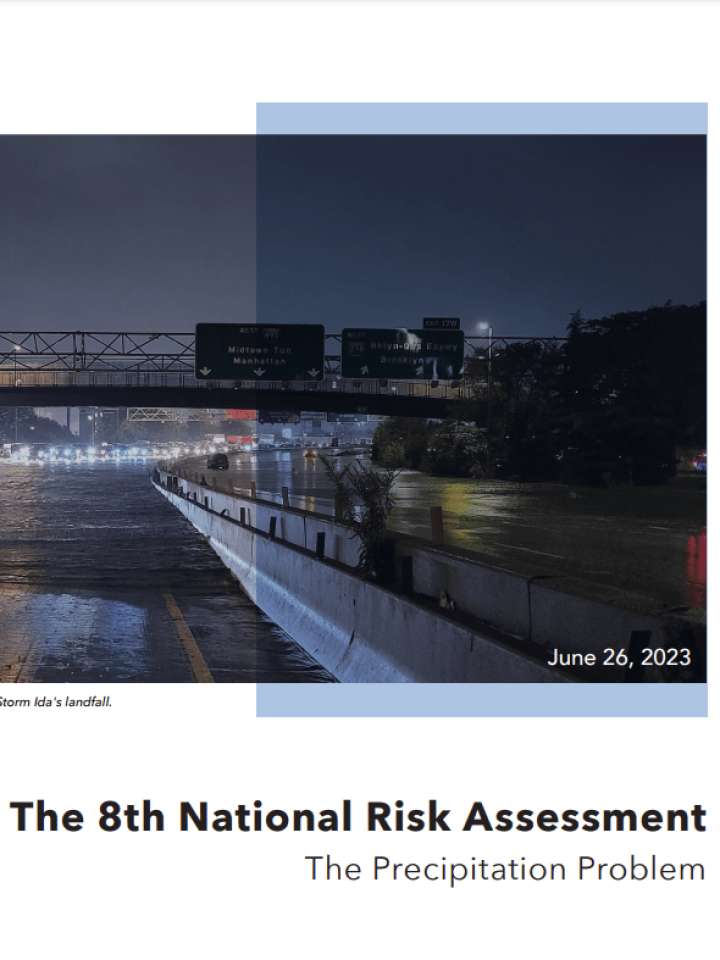The 8th National Risk Assessment: The Precipitation Problem
Flooding from heavy rainfall events is a dangerous phenomenon that has become increasingly probable and severe in the United States due to climate change. The report discusses that as air temperatures increase, more water vapor may be held in the atmosphere and discharged during rainfall events. For every 1°C increase, 7% more water vapor is carried by the same air volume. As a result, increasing temperatures have created changes in the expectations of the Intensity, Duration, and Frequency (IDF) of rainfall events. Rainfall events that were thought to occur only once every hundred years are now occurring with far greater frequency. In some places, these formerly rare events are now occurring as often as every 5 or 10 years, based on the First Street Foundation Precipitation Model (FSF-PM).
The First Street Foundation Flood Model highlights the urgent need for accurate data collection and analysis to protect communities from the impacts of climate change. Policymakers must prioritize the collection and analysis of accurate data to ensure that infrastructure investments provide effective protection against flooding. This includes allocating funding for research, ensuring that climate change and extreme events are consistently taken into account in precipitation models, and updating FEMA’s SFHA designation to consider precipitation. By taking these steps, policymakers can ensure that communities are adequately prepared for the increasingly severe impacts of climate change.
Explore further
